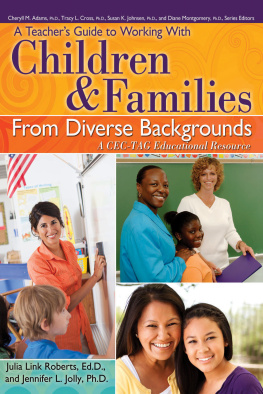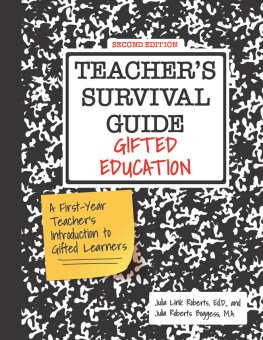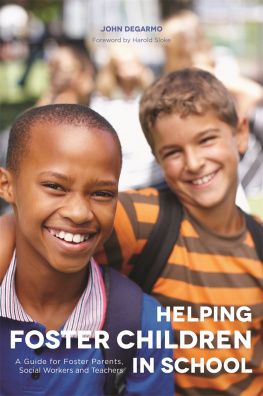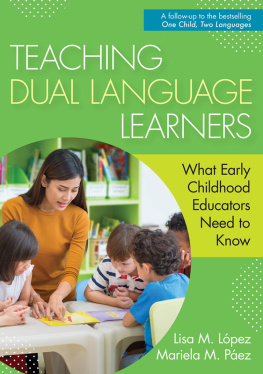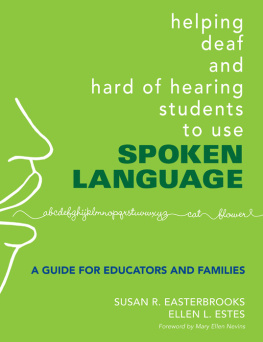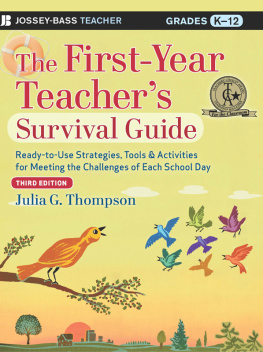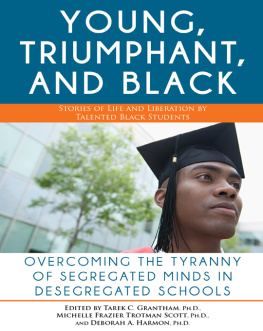A Teachers Guide to Working With
Children
&Families
F rom D iverse B ackgrounds
A CEC-TAG Educational Resource
A Teachers Guide to Working With
Children
& Families
F rom D iverse B ackgrounds
A CEC-TAG Educational Resource
Julia Link Roberts, Ed.D., & Jennifer L. Jolly, Ph.D.
Series Editors
Cheryll M. Adams, Ph.D., Tracy L. Cross, Ph.D.,
Susan K. Johnsen, Ph.D., and Diane Montgomery, Ph.D.

Copyright 2012, Prufrock Press Inc.
Edited by Jennifer Robins
Layout Design by Marjorie Parker and Raquel Trevino
ISBN-13: 978-1-61821-020-3
No part of this book may be reproduced, translated, stored in a retrieval system, or transmitted, in any form or by any means, electronic, mechanical, photocopying, microfilming, recording, or otherwise, without written permission from the publisher.
At the time of this books publication, all facts and figures cited are the most current available. All telephone numbers, addresses, and websites URLs are accurate and active. All publications, organizations, websites, and other resources exist as described in the book, and all have been verified. The editors and Prufrock Press Inc. make no warranty or guarantee concerning the information and materials given out by organizations or content found at websites, and we are not responsible for any changes that occur after this books publication. If you find an error, please contact Prufrock Press Inc.
 | Prufrock Press Inc.
P.O. Box 8813
Waco, TX 76714-8813
Phone: (800) 998-2208
Fax: (800) 240-0333
http://www.prufrock.com |
Table of Contents
Barriers to Recognizing Talent Among Diverse Children With Gifts and Talents
Gifted Education and Talent Development: An Overview
Gifted Students From Lower Income Families
Twice-Exceptional Students
Culturally Diverse Gifted Students
Gifted Students Who Are Limited by a Ceiling on Learning
Stepping Up: Teacher Tips to Stop Bullying
Underachieving Gifted Students
Enhancing Collaboration Between Parents and Educators
A Call to Action
CHAPTER 1
Barriers to Recognizing Talent Among Diverse Children With Gifts and Talents
All of us do not have equal talent, but all of us should have an equal opportunity to develop our talents.
John F. Kennedy
When parents and educators collaborate, they increase the likelihood that children will thrive in school. They can work together to set high goals for all children, including those from diverse backgrounds who are also gifted and talented or who have the potential to be advanced learners. Every child in every classroom must have ongoing opportunities to learn on a daily basis. An important component of ongoing learning is to have an appropriate level of challenge. In the context of learning, appropriate challenge is very much like the story of Goldilocks and the Three Bears: The teacher must plan what is just right in terms of challenging childrennot too easy and not too hard. Educators must ensure that they provide opportunities for all children to learn new things every day. School must be the place where children acquire the habits of lifelong learners: they ask questions, they pursue learning opportunities with interest, and they think at high levels. Students thrive when they are involved in engaging learning experiences that encourage them to make continuous progress.
Diversity is an important topic that can expand many discussions about children with gifts and talents. The Association for the Gifted, a division of the Council for Exceptional Children (CEC-TAG), included race, culture, ethnicity, class, gender, sexual orientation, and linguistic issues within the topic of diversity (CEC-TAG, 2009, p. 3). Diverse learners include children who are culturally, linguistically, and ethnically diverse as well as children who have multiple exceptionalities (e. g., a student can be gifted and also have a learning disability). Frequently, educators overlook diverse children for gifted and talented identification and services, resulting in their strengths going unnoticed or being underdeveloped or misunderstood. This underrepresentation belies the premise that the capacity for exceptional achievement exists across racial, ethnic, language, and economic groups as well as some categories of disability (CEC-TAG, 2009, p. 3).
MYTHS THAT PRESENT BARRIERS
Myths about gifted children often interfere with educators ability to recognize the exceptional abilities of diverse children who are gifted and talented, and those myths and misunderstandings further hinder the recognition of exceptional ability among children from lower income families, children from families who do not speak English as their first language, children from various cultural and/or ethnic backgrounds, children from rural and urban schools, and children who are twice-exceptional (i. e., have gifts and talents and also a disability or disabilities). Myths and misunderstandings frequently mask the potential of these children. There are numerous barriers for children who are diverse in one or more of the dimensions mentioned above and also have the potential to be advanced learners.
BARRIER 1
Some educators may mistakenly think that gifted children are from middle- and upper income families. However, gifted childrens families represent the full socioeconomic spectrum. The amount of financial resources a family has does not determine the potential for a child to learn at advanced levels, yet few individuals will recognize a gifted child who may qualify for free or reduced lunch unless they believe that children from all socioeconomic backgrounds can be gifted.
BARRIER 2
Many educators may believe that children with disabilities cannot also be gifted. Children who are twice-exceptional can appear to be anything but gifted unless teachers carefully assess their strengths and teach to them. If teachers are unaware of the possibility that a child may be twice-exceptional, they will concentrate on addressing the needs created by the disability and overlook the needs created by the strengths, seriously limiting opportunities to develop the students potential.
BARRIER 3
Culturally diverse students may not display their gifts and talents in ways that mirror what teachers have traditionally been taught to use in recognizing advanced ability or potential. With these limitations, many gifted and talented children from culturally diverse families may not even be considered for advanced instruction or nomination for placement in gifted programming due to a mismatch between perceived expectations and actual or potential performance. Many educators also expect English language learners (ELLs; children for whom English is not the first language in their home) to be preoccupied with learning to speak and read English. Instead, ELLs may be frustrated by limitations presented in the curriculum, as they need to think at high levels but dont have opportunities to do so. Their needs are twofold: the need to acquire fluency in English and the need to be learning at a challenging level in the different content areas.
BARRIER 4
The focus on grade-level learning or proficiency raises a barrier to learning for children who are ready to learn at a faster pace and at a more complex level. All children who are ready to progress as readers or to absorb more advanced content in science or history, for example, need opportunities to do so rather than having to wait until others in the class share those interests or are ready to move on with the content. That may never happen, or it may not occur at a pace at which the advanced learners are eager to learn. Waiting until others are ready can create bad habits that lead to situational or long-term underachievement.

